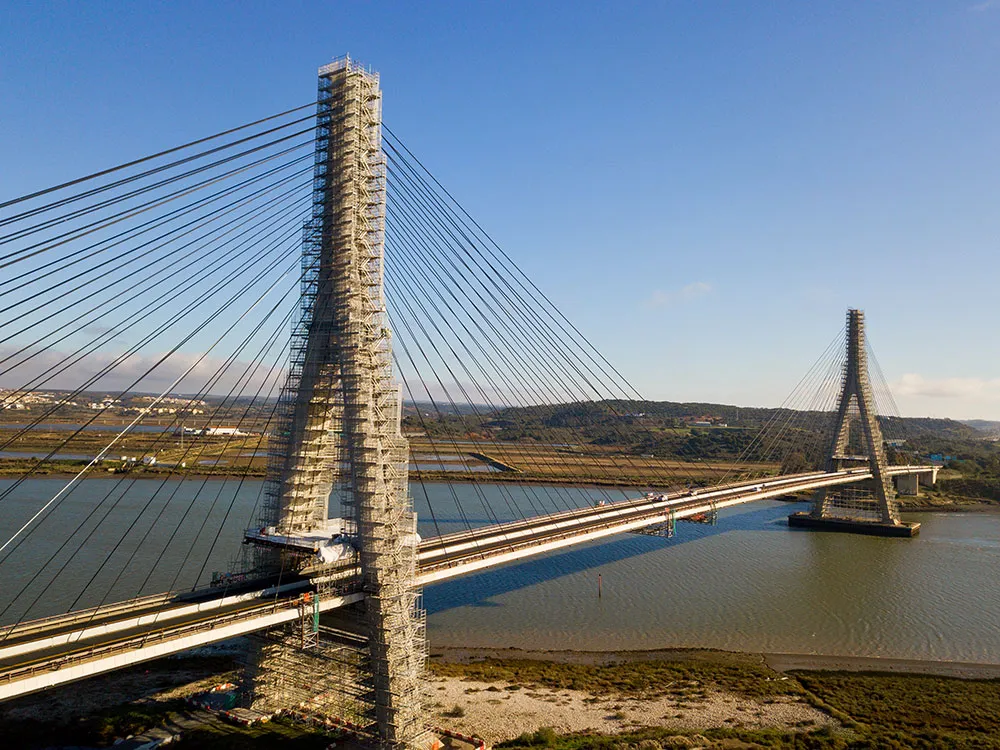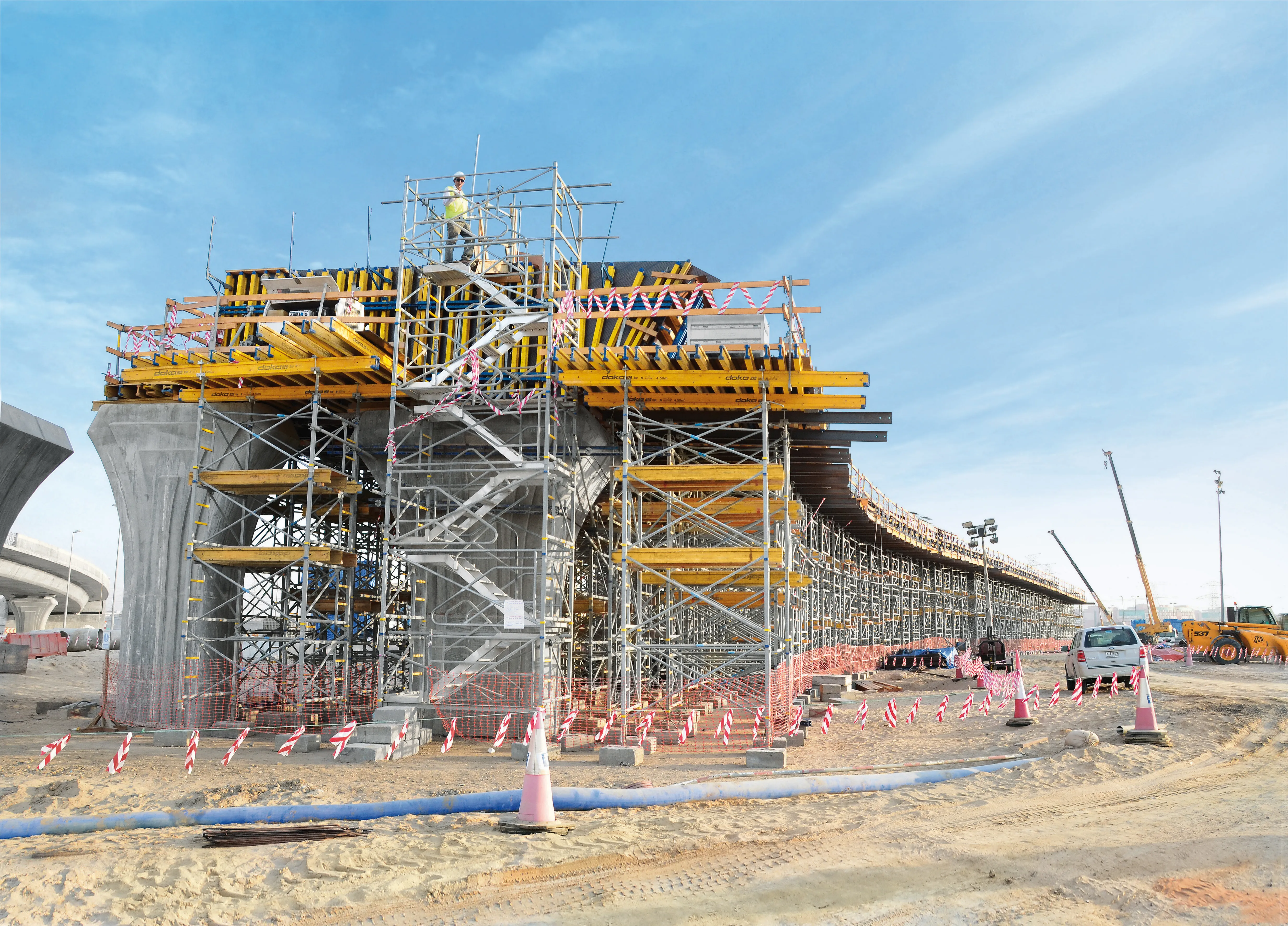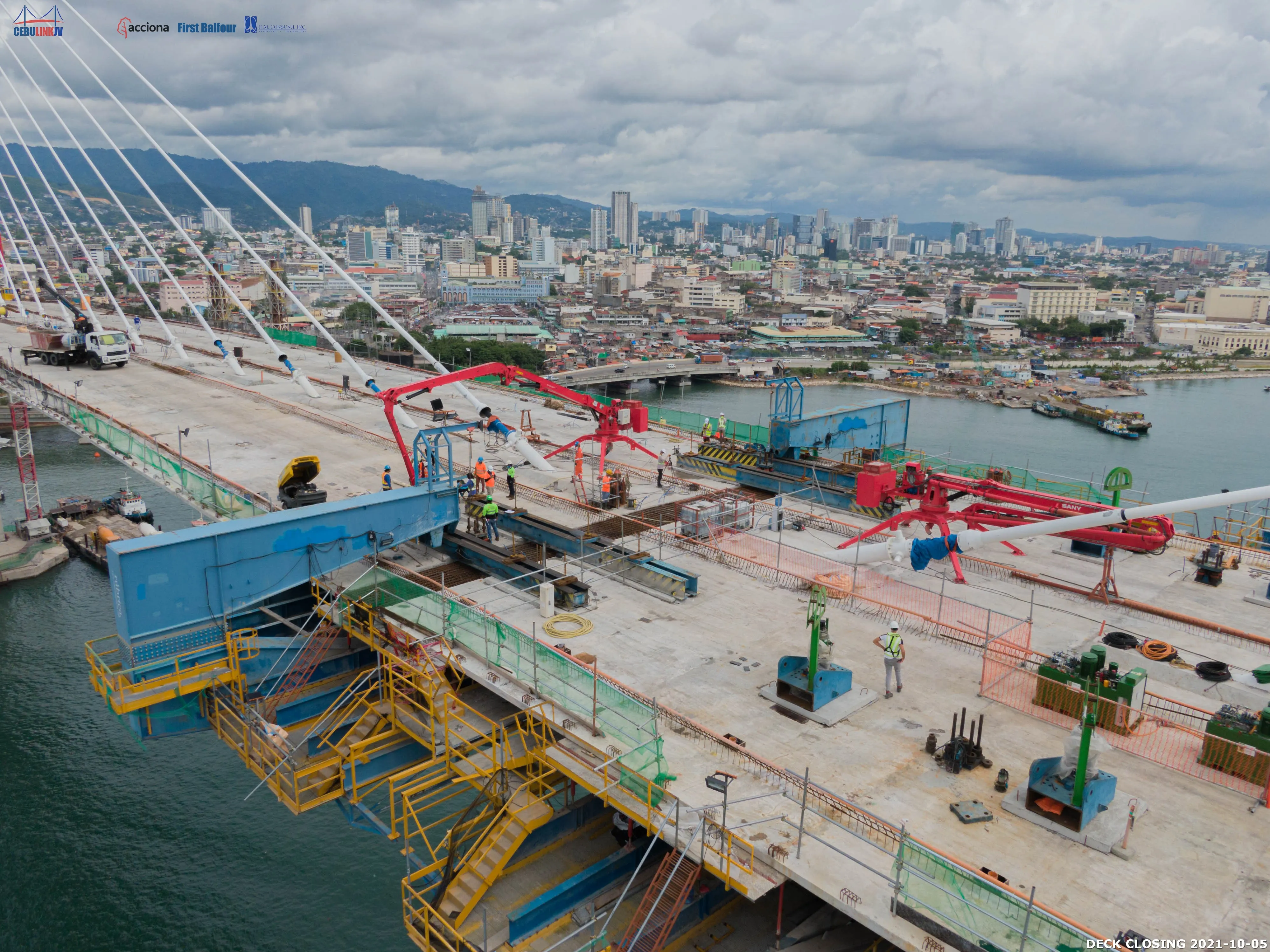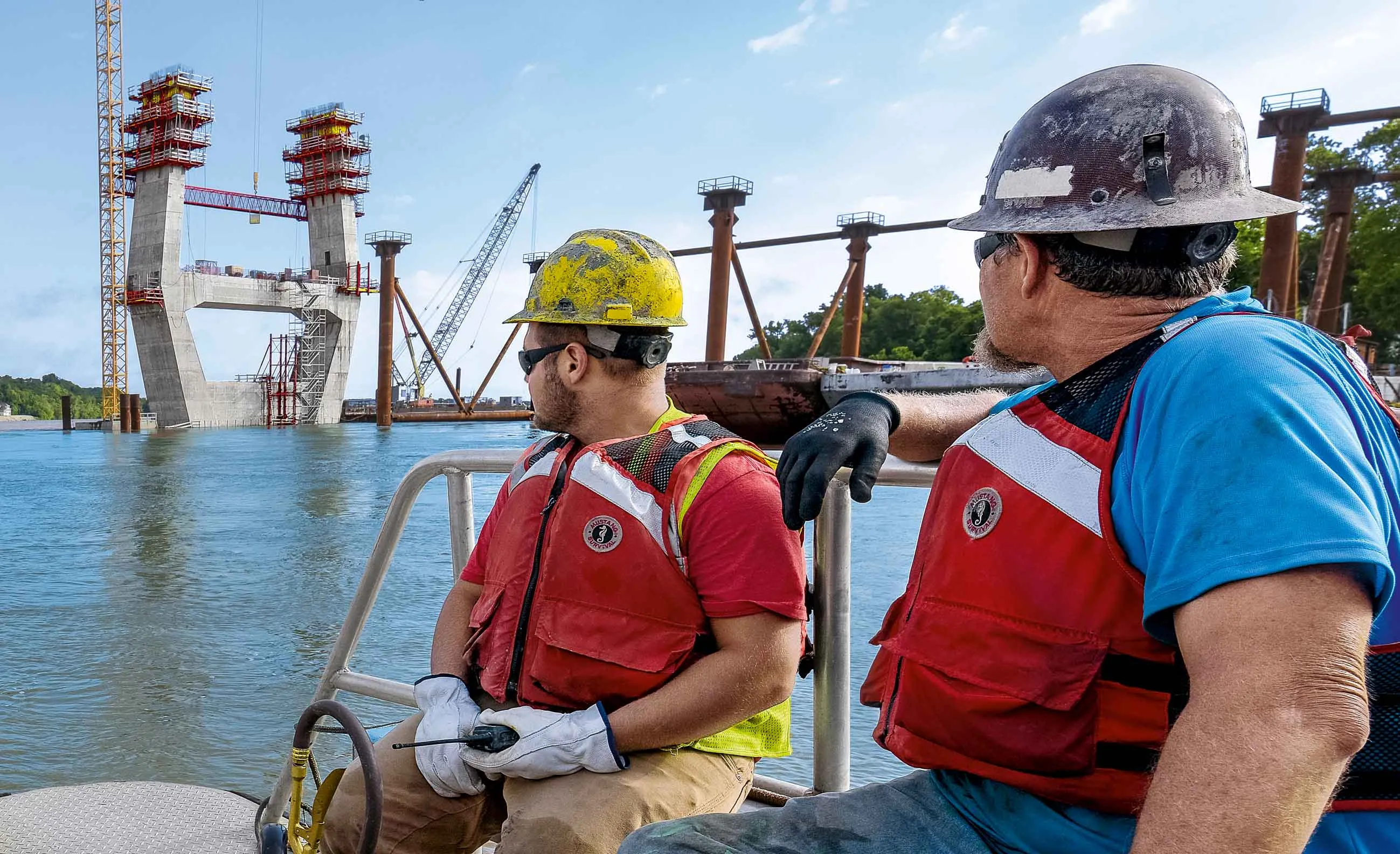
The cable-stayed structure crosses the Guadiana River to connect the Spanish town of Ayamonte and Portugal’s Vila Real de Santo António, both popular tourist destinations.
The 666m, 5-span heavily trafficked composite bridge was designed by the architects José Luis Cancio Martins and Teixeira Duarte and opened in 1991. The bridge – with a 334m central span - connects Portugal’s Via do Infante de Sagres A22 Motorway to Spain’s Autopista del Quinto Centenario A-49 Motorway and is part of the European Route E1.
Renovation work includes a major repair of suspension cables and large-scale structural and mechanical maintenance, as well as repaving of the road deck.
ULMA provisioned 460tonnes of formwork and scaffolding for the work.
The 100m-high pylons were covered with BRIO Modular Scaffolding and access stairways to creating many distinct access points to facilitate the repair of suspension cables. The scaffolding design had to accommodate the pylon geometry and the presence of the suspension cables, while providing safe working spaces. ULMA’s design was further complicated by the presence of strong winds onsite.
ULMA was required to provide an efficient and timely response to the project’s various demands, not least enough scaffolding to renovate pylons simultaneously.
Two protective gantries – one for each pylon – were installed in an extremely limited space so renovation could be undertaken without interrupting traffic flow. In order to adapt to the limited space available and withstand the load of the scaffolding structures, the gantries were made from heavy-duty T-500 Shoring Towers combined with intermediate metal beams and ENKOFORM.
See the Key project report on page 20 of this issue of World Highways for ULMA’s work on the Cebu–Cordova Link Expressway in the Philippines.









